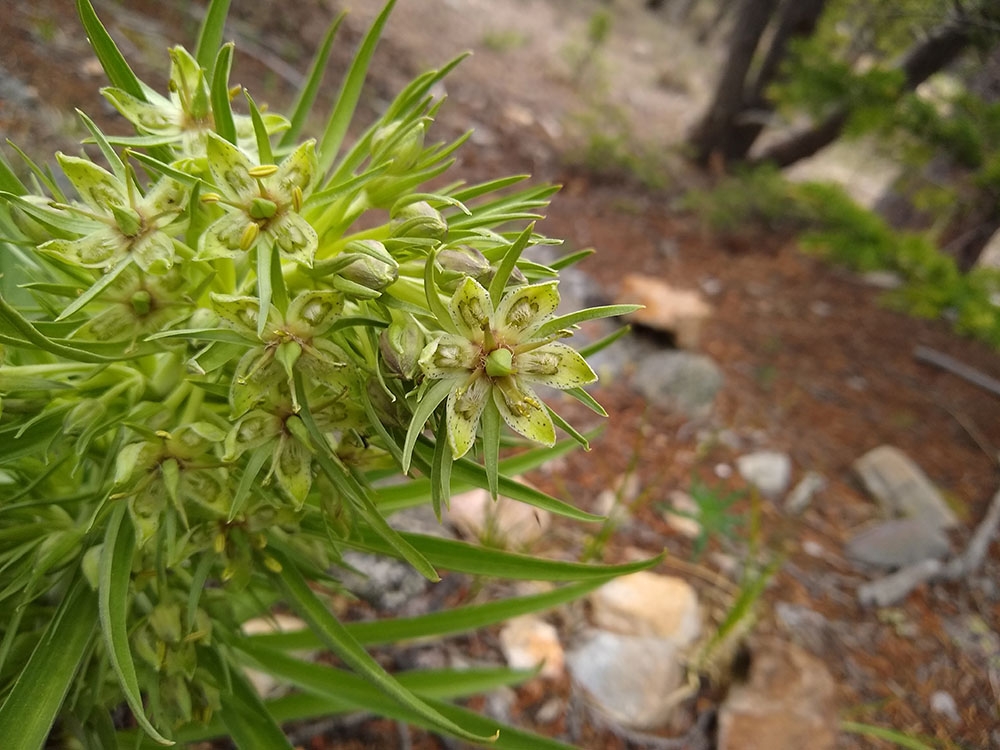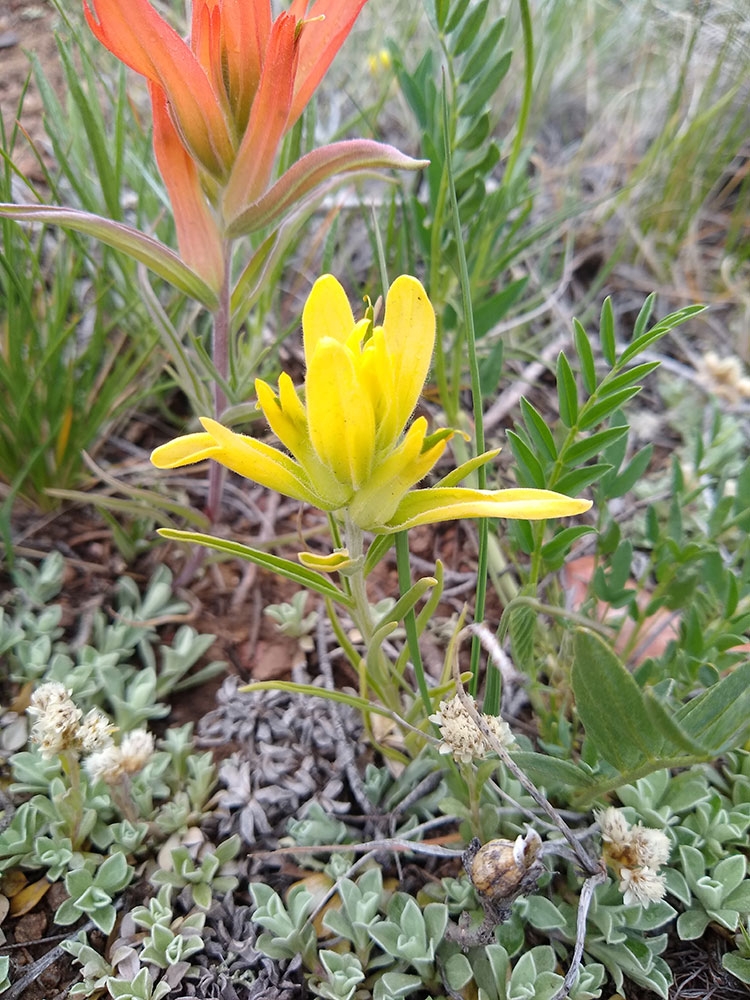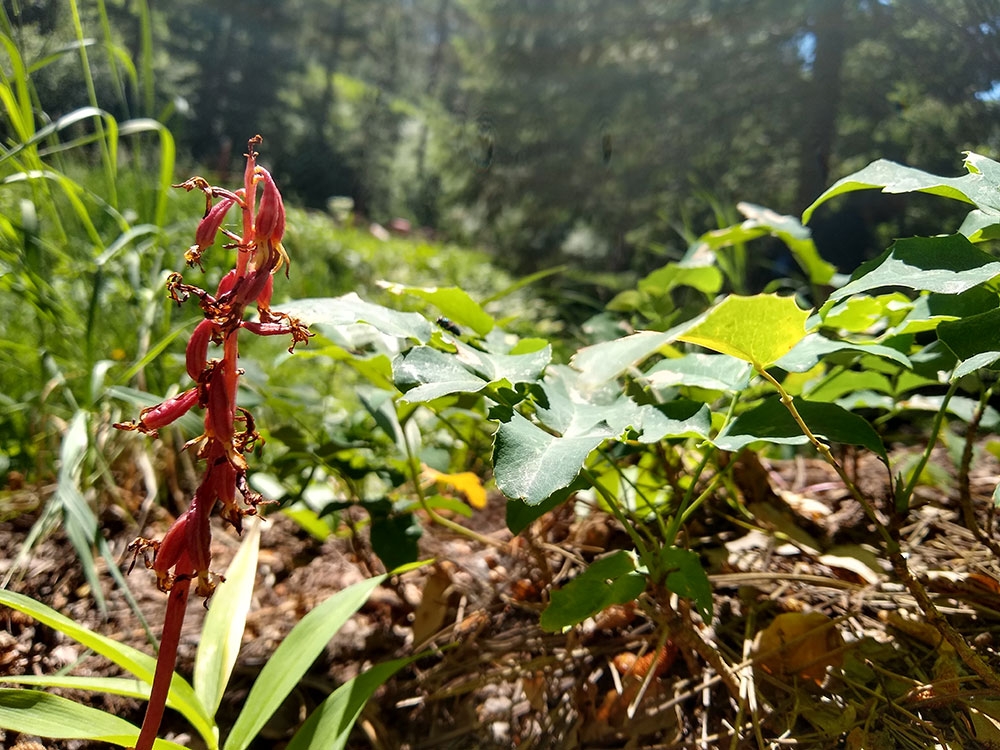An Adventure in Unusual Alpine Flora on Colorado Mountains
During my time as the Rock Alpine Garden intern, I have been lucky enough to embark on many adventures into the field. I’ve added fencing around the montane gardens at Mount Goliath, summited Mount Evans to collect herbarium specimens with Horticulture Specialist Amy Schneider, hiked across Horseshoe Ridge with visiting alpine gardeners from Royal Botanic Gardens, Kew, and passed through alpine tundra sites used for species richness surveys by my mentor, Curator of Alpine Collections Mike Kintgen.
In my travels, I have seen many interesting plants of Colorado. On one memorable hike, I saw a singular bright stemmed plant with red, fruiting capsules. I pondered this unique plant and considered possible identifications: was it an orchid or possibly a mycoheterotroph (a plant that gets all its food from parasitism rather than photosynthesis)? I took photos and consulted the experts back at Denver Botanic Gardens. My instincts were right! The plant was Corallorhiza wisteriana, or spring coralroot, a mycoheterotrophic orchid species that contains no chlorophyll. How cool!
On another outing, Tom Freeth (from the Davies Alpine House at Kew Gardens) insisted we stop to admire a field of Castilleja integra, a hemi-parasitic plant in the family Orobanchaceae. I was more than pleased to inspect the flowers and mull on their apt common name, paintbrush, in relation the swaths of red across an otherwise unremarkable grazing field. My eyes danced from one patch to the next before landing on one outlying individual: a yellow flower form. I called my co-botanizers and to my delight they proclaimed I had found an albino version of the species.
Another favorite mountain species, Frasera speciosa (also known as green gentian, elkweed or monument plant), is an alpine plant that can be found around Colorado’s foothills, forests and meadows, ranging in a montane environments from subalpine to alpine. These robust angiosperms can grow taller than I stand and are monocarpic, flowering once in their lifetime. Each flower generally has four fringed petals, however, while hiking in the Mosquito Range of Colorado, I found a specimen with six petals! These mutant versions are a testament to genetic diversity and the old botanist’s adage: for every rule there is an exception.
This blog post was written by Emily Rose Alworth. Emily is the Rock Alpine Garden summer intern at the Gardens. Recently, she completed her undergraduate education focused on botany, ecology, mycology, and fine arts at Sarah Lawrence College.
Gallery



Add new comment